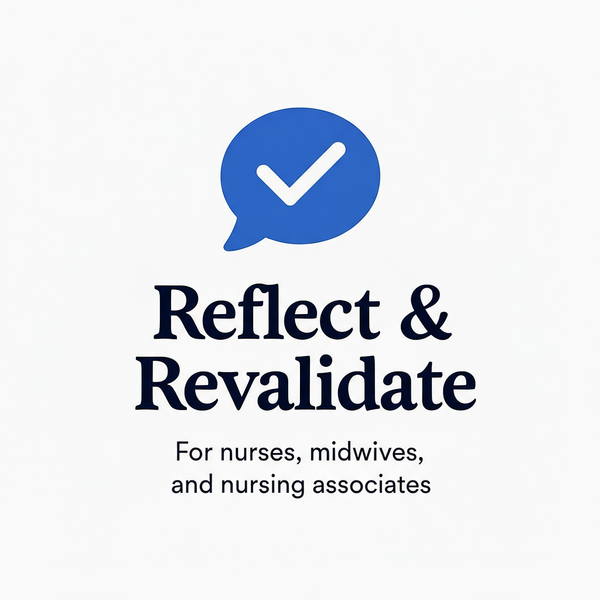Reflection: My First Home Birth Experience
Share
Submitted by: Sarah K., Newly Qualified Midwife working in a community midwifery team
What was the nature of the CPD activity and/or practice-related feedback and/or event or experience in your practice?
As a newly qualified midwife, I attended my first planned home birth as the lead midwife. The woman was a second-time mother who had experienced a straightforward first birth in hospital but felt strongly that she wanted to birth at home this time. I had attended home births as a student, but this was my first time taking full responsibility.
I arrived at her home in early labour, and whilst I felt clinically prepared, I quickly realised that supporting a home birth required different skills than hospital-based care. I needed to work with the family's environment, adapt to their preferences, and make clinical decisions without immediate access to the full hospital team.
The birth progressed beautifully. The woman laboured in her own space, surrounded by her partner and with her toddler sleeping upstairs. She birthed in her living room in a pool she had hired, and I supported her through a physiological third stage. Mother and baby were both well, and I completed all postnatal checks before leaving them to rest as a family.
The experience was profoundly moving and challenged many of my assumptions about what "safe" birth looks like.
What did you learn from the CPD activity and/or feedback and/or event or experience in your practice?
This experience taught me that midwifery is about far more than clinical skills—it's about trusting the physiological process of birth and supporting women's choices in a way that promotes both safety and autonomy.
I learned that being in the woman's own environment fundamentally changes the dynamic of care. Rather than the woman adapting to the hospital environment, I needed to adapt my practice to her home. This meant being more flexible, resourceful, and confident in my clinical decision-making.
I also learned the importance of thorough preparation and risk assessment. Before the birth, I had carefully reviewed her notes, discussed emergency scenarios, and ensured I had all necessary equipment. This preparation gave me confidence to support her choices whilst maintaining safety.
The woman's feedback afterwards was incredibly positive. She said she felt empowered, respected, and safe throughout. This reinforced that woman-centred care isn't just about being kind—it's about genuinely respecting women's autonomy and supporting their informed choices.
Following this experience, I attended additional training on intrapartum emergencies in the home setting and joined our trust's home birth working group to contribute to service development.
How did you change or improve your practice as a result?
Following this experience, I have made several changes to my practice:
- I now actively promote home birth as a safe option for women with straightforward pregnancies, whereas previously I felt uncertain about discussing it
- I've improved my antenatal discussions about place of birth, ensuring women have evidence-based information about all their options
- I've developed better skills in risk assessment and shared decision-making, helping women make informed choices that are right for them
- I've become more confident in my clinical skills and decision-making, trusting my training and the physiological process of birth
- I've improved my equipment preparation and emergency planning for home births
- I regularly debrief with colleagues after home births to share learning and celebrate positive experiences
These changes have made me a more confident and woman-centred midwife. I've since supported several more home births, each one reinforcing my belief in supporting women's choices and trusting the birth process.
I've also shared my positive experience with student midwives and newly qualified colleagues, encouraging them to embrace home birth as a valuable part of midwifery practice.
How is this relevant to the Code?
This reflection relates directly to several aspects of the NMC Code:
- Section 1.2: Make sure you deliver the fundamentals of care effectively - I ensured high-quality, safe care in the home environment
- Section 2.2: Recognise and respect the contribution that people can make to their own health and wellbeing - I supported the woman's informed choice about place of birth
- Section 3.4: Act in the best interests of people at all times - I balanced supporting her choices with maintaining clinical safety
- Section 4.2: Make sure that you get properly informed consent and document it before carrying out any action - I ensured thorough antenatal discussions and documented her informed choices
- Section 13.3: Ask for help from a suitably qualified and experienced healthcare professional to carry out any action or procedure that is beyond the limits of your competence - I maintained contact with the on-call consultant midwife and knew when to escalate if needed
- Section 19.1: Take measures to reduce as far as possible, the likelihood of mistakes, near misses, harm and the effect of harm if it takes place - I thoroughly prepared equipment and emergency plans to ensure safe care
Continuing Development
I plan to continue developing my skills in supporting home births by attending advanced training in managing intrapartum emergencies and neonatal resuscitation. I'm also working towards becoming a home birth champion in our team, supporting other midwives to develop confidence in this area of practice.
I've committed to regular reflective practice and clinical supervision to ensure I continue to provide safe, woman-centred care in all settings.
If you're preparing your revalidation portfolio and need support with your reflective accounts or confirmer discussion, book a professional confirmer session for expert, judgment-free guidance.
